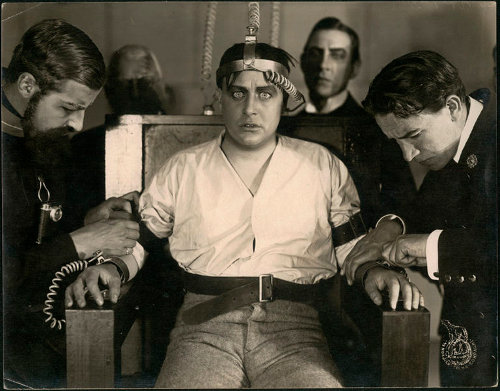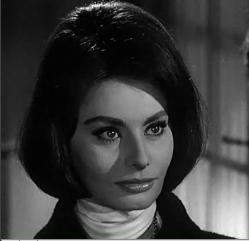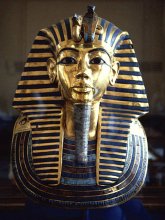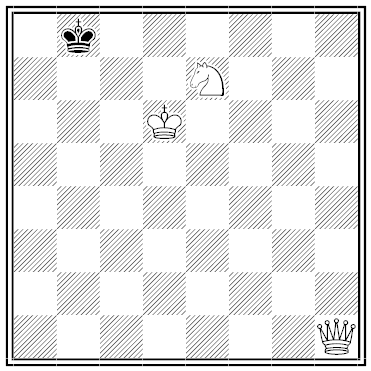“Science is what you know, philosophy is what you don’t know.” — Bertrand Russell
Poetic Justice
In reversing an opinion in 1975, Georgia appeals court judge Randall Evans Jr. wrote his decision in verse:
The D.A. was ready
His case was red-hot.
Defendant was present,
His witness was not.
He prayed one day’s delay
From his honor the judge.
But his plea was not granted
The Court would not budge.
So the jury was empaneled
All twelve good and true
But without his main witness
What could the twelve do?
The jury went out
To consider his case
And then they returned
The defendant to face.
“What verdict, Mr. Foreman?”
The learned judge inquired.
“Guilty, your honor.”
On Brown’s face — no smile.
“Stand up,” said the judge,
Then quickly announced,
“Seven years at hard labor”
Thus his sentence pronounced.
“This trial was not fair,”
The defendant then sobbed.
“With my main witness absent
I’ve simply been robbed.”
“I want a new trial —
State has not fairly won.”
“New trial denied,”
Said Judge Dunbar Harrison.
“If you still say I’m wrong,”
The able judge did then say
“Why not appeal to Atlanta?
Let those Appeals Judges earn part of their pay.”
“I will appeal, sir” —
Which he proceeded to do —
“They can’t treat me worse
Than I’ve been treated by you.”
So the case has reached us —
And now we must decide
Was the guilty verdict legal —
Or should we set it aside?
Justice and fairness
Must prevail at all times;
This is ably discussed
In a case without rhyme.
The law of this State
Does guard every right
Of those charged with crime,
Fairness always in sight.
To continue civil cases
The judge holds all aces.
But it’s a different ball game
In criminal cases.
Was one day’s delay
Too much to expect?
Could the State refuse it
With all due respect?
Did Justice applaud
Or shed bitter tears
When this news from Savannah
First fell on her ears?
We’ve considered this case
Through the night — through the day.
As Judge Harrison said,
“We must earn our poor pay.”
This case was once tried —
But should now be rehearsed
And tried one more time.
This case is reversed!
Evans explained in a footnote: “This opinion is placed in rhyme because approximately one year ago, in Savannah at a very convivial celebration, the distinguished Judge Dunbar Harrison, Senior Judge of Chatham Superior Courts, arose and addressed those assembled, and demanded that if Judge Randall Evans Jr. ever again was so presumptuous as to reverse one of his decisions, that the opinion be written in poetry. I readily admit I am unable to comply, because I am not a poet, and the language used, at best, is mere doggerel. I have done my best, but my limited ability just did not permit the writing of a great poem. It was no easy task to write the opinion in rhyme.”
Future Perfect

While browsing around the library one day, I notice an old dusty tome, quite large, entitled ‘Alvin I. Goldman.’ I take it from the shelf and start reading. In great detail, it describes my life as a little boy. It always gibes with my memory and sometimes even revives my memory of forgotten events. I realize that this purports to be a book of my life and I resolve to test it. Turning to the section with today’s date on it, I find the following entry for 2:36 p.m. ‘He discovers me on the shelf. He takes me down and starts reading me …’ I look at the clock and see that it is 3:03. It is quite plausible, I say to myself, that I found the book half an hour ago. I turn now to the entry for 3:03. It reads: ‘He is reading me. He is reading me. He is reading me.’ I continue looking at the book in this place, meanwhile thinking how remarkable the book is. The entry reads: ‘He continues to look at me, meanwhile thinking how remarkable I am.’
I decide to defeat the book by looking at a future entry. I turn to an entry 18 minutes hence. It says: ‘He is reading this sentence.’ Aha, I say to myself, all I need do is refrain from reading that sentence 18 minutes from now. I check the clock. To ensure that I won’t read that sentence, I close the book. My mind wanders; the book has revived a buried memory and I reminisce about it. I decide to reread the book and relive the experience. That’s safe, I tell myself, because it is an earlier part of the book. I read that passage and become lost in reverie and rekindled emotion. Time passes. Suddenly I start. Oh yes, I intended to refute the book. But what was the time of the listed action?, I ask myself. It was 3:19, wasn’t it? But it’s 3:21 now, which means I have already refuted the book. Let me check and make sure. I inspect the book at the entry for 3:17. Hmm, that seems to be the wrong place, for there it says I’m in a reverie. I skip a couple pages and suddenly my eyes alight on the sentence: ‘He is reading this sentence.’ But it’s an entry for 3:21, I notice! So I made a mistake. The action I had intended to refute was to occur at 3:21, not 3:19. I look at the clock, and it is still 3:21. I have not refuted the book after all.
— Alvin I. Goldman, “Actions, Predictions, and Books of Life,” American Philosophical Quarterly, 1968
Goldman’s point is not that determism is true, but that it could be. It’s possible to imagine a determined universe, even one in which your own actions are accurately predicted, that unfolds in a way that makes it appear quite similar to our own. “The fact that this imagined world is determined and contains predictions of acts, and yet resembles the real world very closely, suggests to me that the real world may also be determined,” Goldman writes. Might it?
Even Odds
A bag contains 16 billiard balls, some white and some black. You draw two balls at the same time. It is equally likely that the two will be the same color as different colors. What is the proportion of colors within the bag?
Exit Lines

Last words of executed criminals:
- “Mercy! Mercy! Mercy! Don’t hang me! I can’t die! I’m not ready to die! I don’t want to die!” — North Carolina burglar Henry F. Andrews, 1879
- “Where is my little boy? Look at me, my son, and take warning.” — Louisiana murderer Edward Rector, 1884
- “What time is it? I wish you’d hurry up. I want to get to hell in time for dinner.” — Wyoming murderer John Owens, 1886
- “These are for my sister [taking off her eyeglasses]. Please see that she gets them.” — Vermont murderer Mary Mabel Rogers, 1905
- “They can’t kill a smile!” — Montana murderer Harrison Gibson, smiling, 1917
- “I have something of interest to tell –” — California murderer Paul Rowland, cut off by his hanging, 1929
- “Make it snappy.” — California murderer Charles H. Simpson, 1931
- “You might get me a gas mask.” — Arizona murderer Jack Sullivan, 1936
- “So long.” — Utah robber and murderer James Joseph Roedl, 1945
- “Kiss my ass.” — John Wayne Gacy, to a prison guard, 1994
- “Merry Christmas.” — Virginia rapist and murderer Lem Tuggle, 1996
Before his lethal injection in 2007, Arizona murderer Robert Comer said, “Go Raiders.”
That Kind of Woman

“What a subject: her nose is too big, her mouth is too big, she has the composites of all the wrong things, but put them all together and pow! All the natural mistakes of beauty fall together to create a magnificent accident.” — Rex Reed on Sophia Loren, review, Oct. 23, 1968
Black and White
An Atheist’s Credo
George P. Spencer of Lyndon Center, Vt., died in 1908 at age 83. His epitaph is inscribed on the sides of a granite monument:
Beyond the universe there is nothing and within the universe the supernatural does not and cannot exist. Of all deceivers who have plagued mankind, none are so deeply ruinous to human happiness as those impostors who pretend to lead by a light above nature. Science has never killed or persecuted a single person for doubting or denying its teachings, and most of these teachings have been true; but religion has murdered millions for doubting or denying her dogmas, and most of these dogmas have been false.
(From Charles L. Wallis, Stories on Stone, 1954)
Tut-Tut

In 1982, San Francisco police lieutenant George LaBrash suffered a stroke while guarding the 3,300-year-old mask of King Tutankhamun. He filed an $18,400 lawsuit against the city, alleging that the pharaoh’s curse had struck him for disturbing the dead — and hence that the injury was job-related.
“I firmly believe that King Tut’s curse is as good an explanation for what happened to me as any,” he told Superior Court Judge Richard P. Figone.
Figone didn’t buy it. “The spectators who attended the exhibit may just as well have ‘disturbed’ the remains of the deceased,” he wrote. “Officer LaBrash, if anything, prevented desecration of those remains.”
In a Word
akrasia
n. weakness of will
“I see and praise what is better, but follow what is worse.” — Ovid

